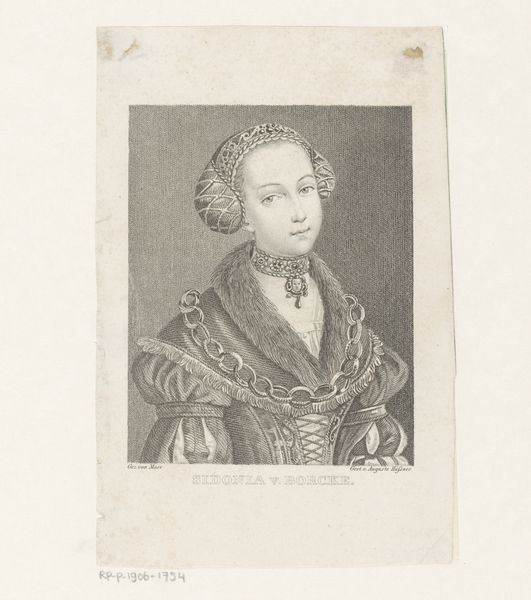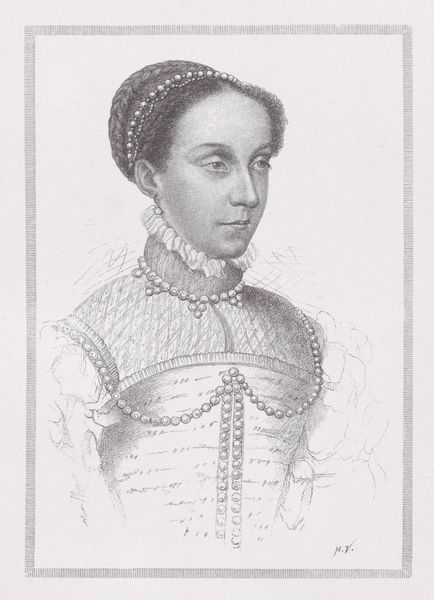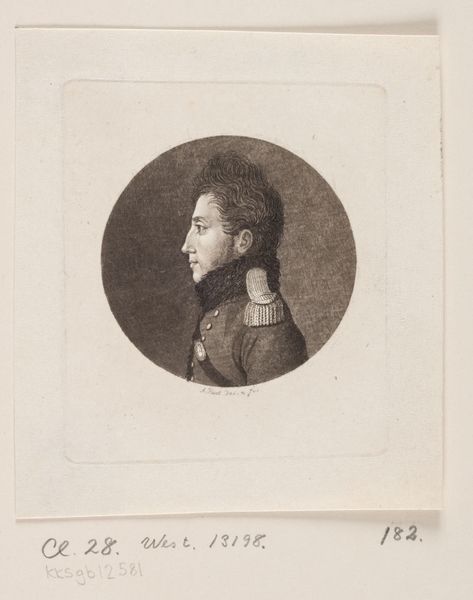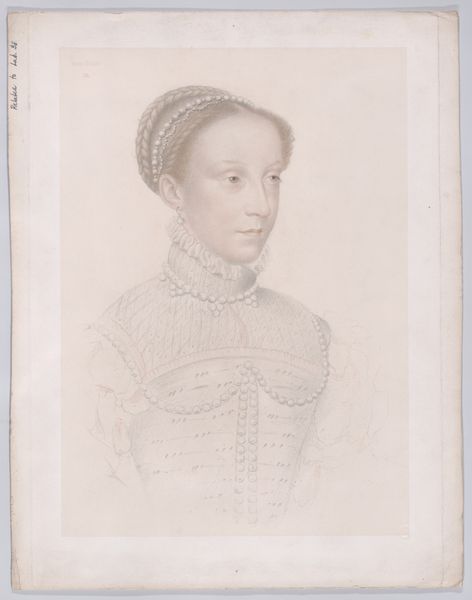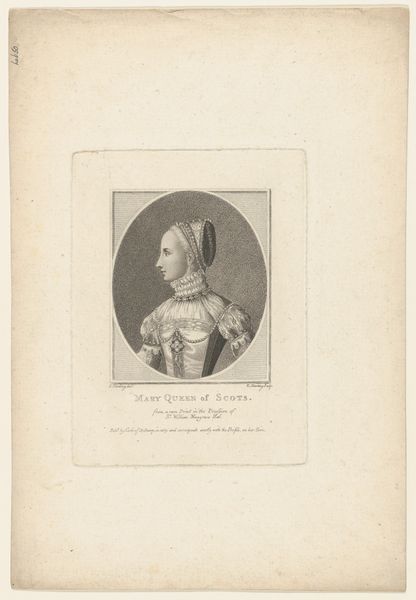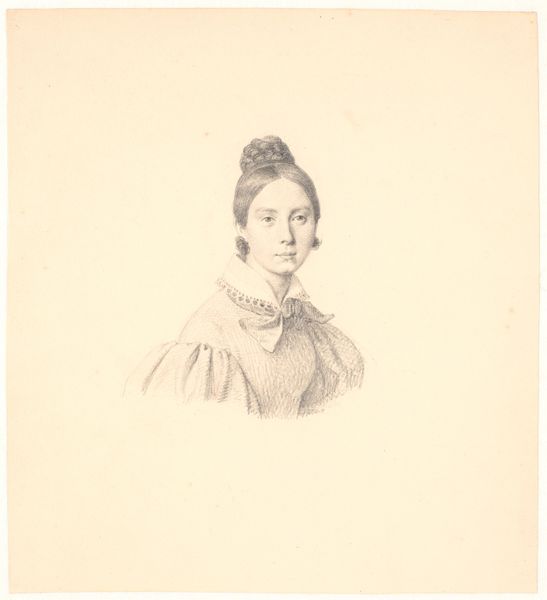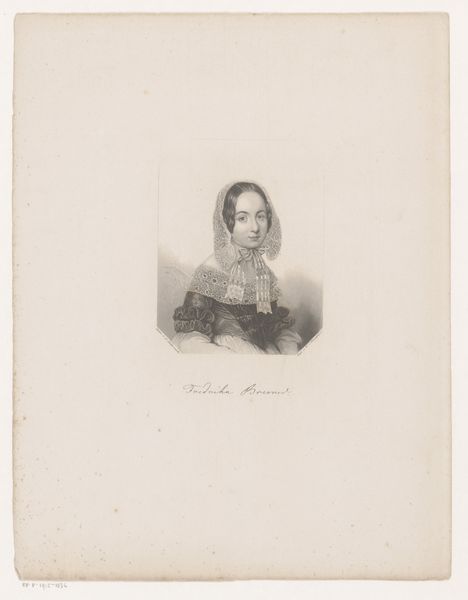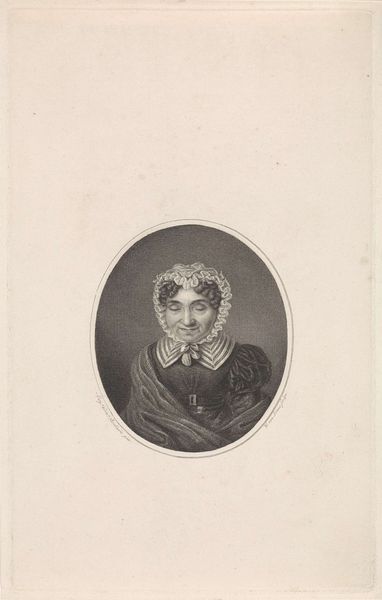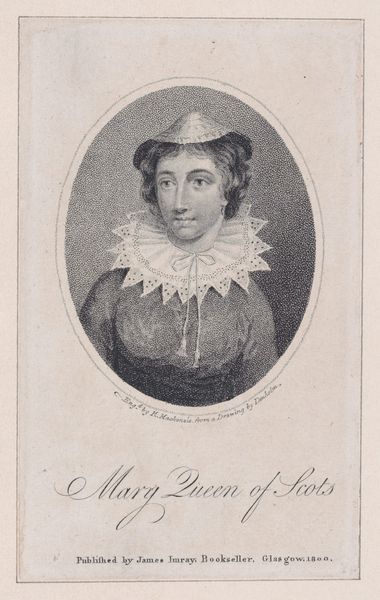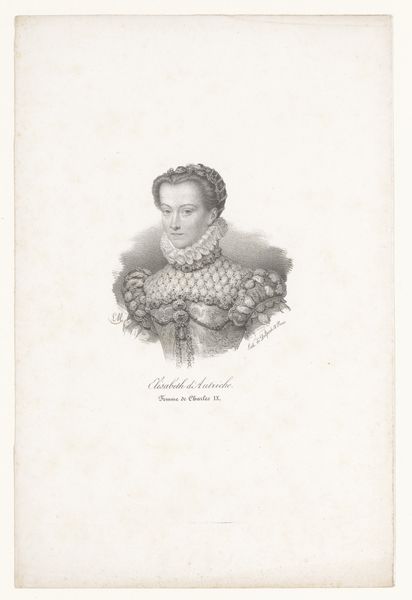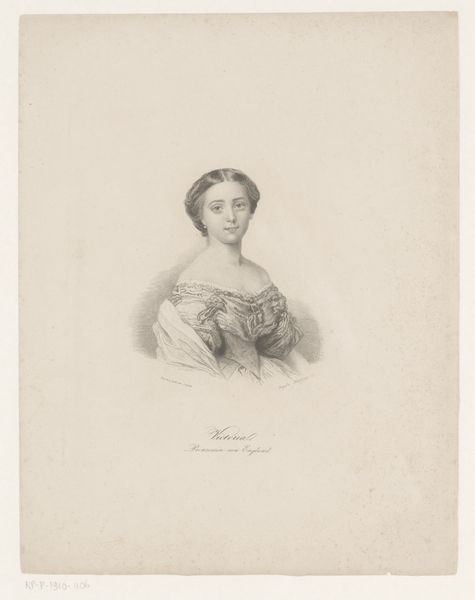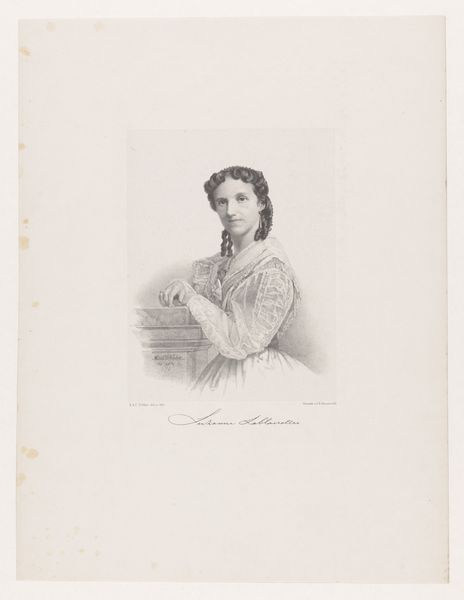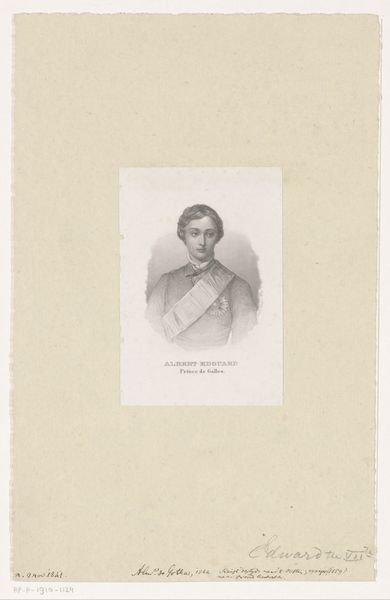
Dimensions: Sheet: 8 7/8 × 7 5/16 in. (22.5 × 18.6 cm)
Copyright: Public Domain
Editor: Here we have Adolphe Pierre Riffaut's pencil drawing of "Mary, Queen of Scots," which he worked on from 1848 to 1889. The detail is remarkable, but there’s a wistful sadness in her expression. What cultural forces might have shaped this particular depiction? Curator: The 19th century witnessed a Romantic fascination with historical figures, especially tragic ones. Mary, Queen of Scots, embodies this perfectly – a powerful woman undone by political intrigue and personal choices. Think about how Victorian society, simultaneously captivated and repulsed by female power, would have responded. The drawing humanizes her, emphasizing vulnerability and potentially critiquing the patriarchal structures that led to her downfall. What do you make of her gaze? Editor: It's averted, almost melancholic, suggesting a weight on her shoulders, perhaps regret. But wouldn't later audiences project their own interpretations onto such historical portraits? Curator: Precisely! The artwork serves as a kind of cultural mirror. The Victorians could see reflections of their own societal anxieties regarding gender, power, and morality projected onto Mary's story. The market for historical portraits exploded in the 19th century because people wanted to see themselves and their struggles in the past. What impact do you think photography may have had at the time? Editor: That’s a really interesting thought, considering the rise of photography might have pushed drawing more towards subjective, interpretative portraiture, further fueling interest in her image. Curator: Exactly. The pencil sketch suggests intimacy and interiority, diverging from the objectivity associated with the newer photographic medium. Consider, then, how it all influences and builds on pre-existing interpretations of powerful women. Editor: It’s fascinating how this drawing encapsulates so much about the 19th-century's engagement with history and gender. Curator: Indeed. It reminds us that artistic representations are never neutral; they are always products of their time and participants in cultural conversations.
Comments
No comments
Be the first to comment and join the conversation on the ultimate creative platform.
